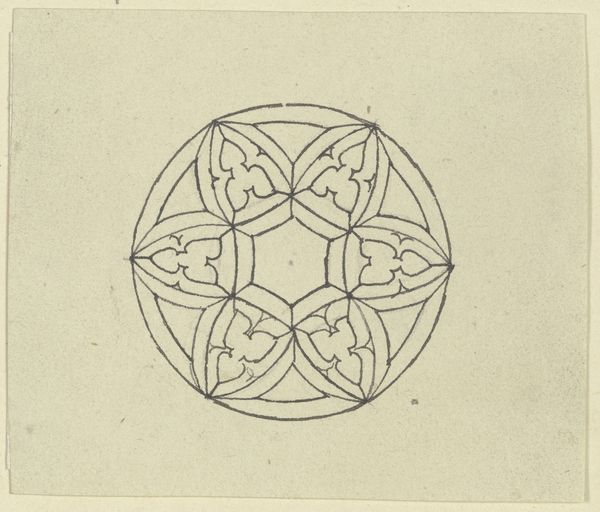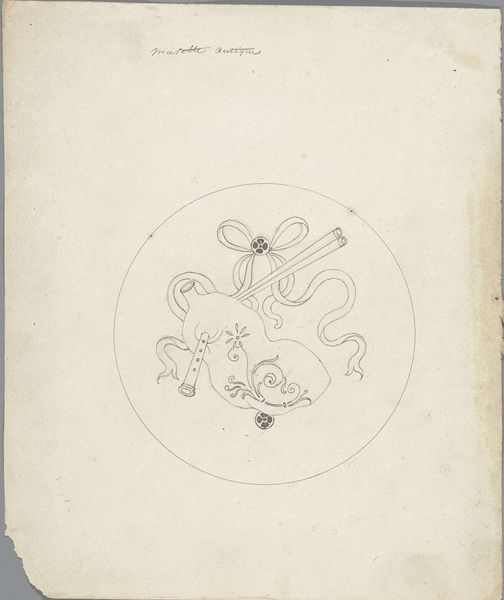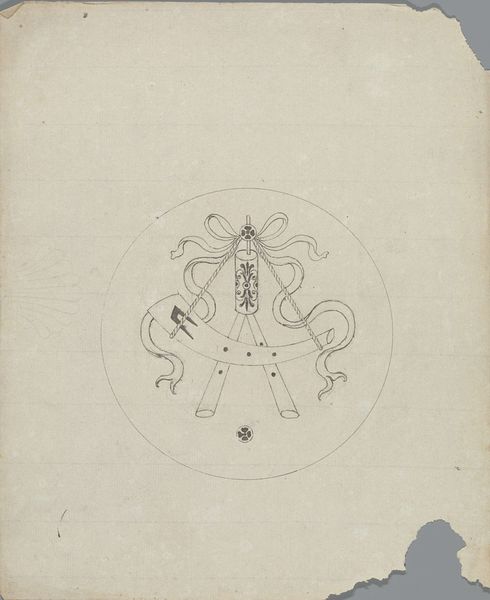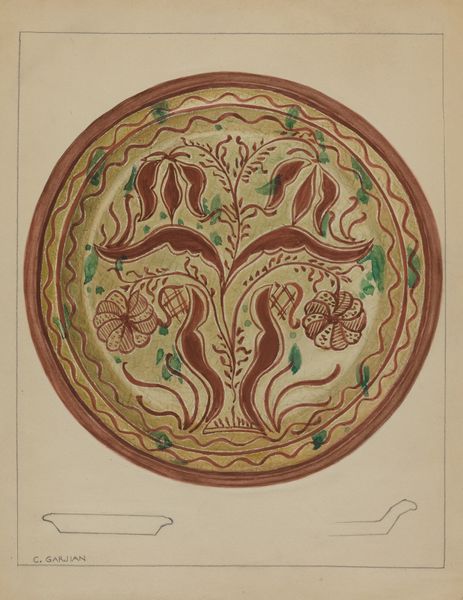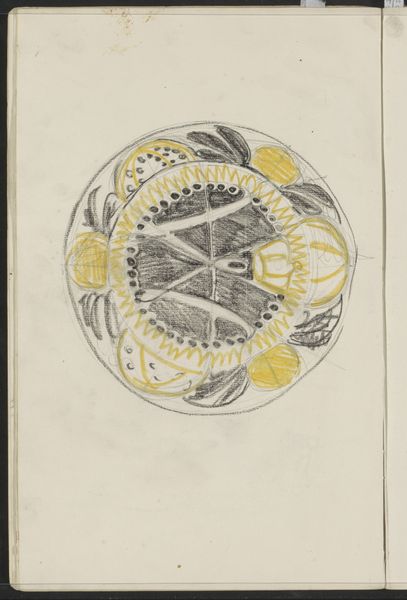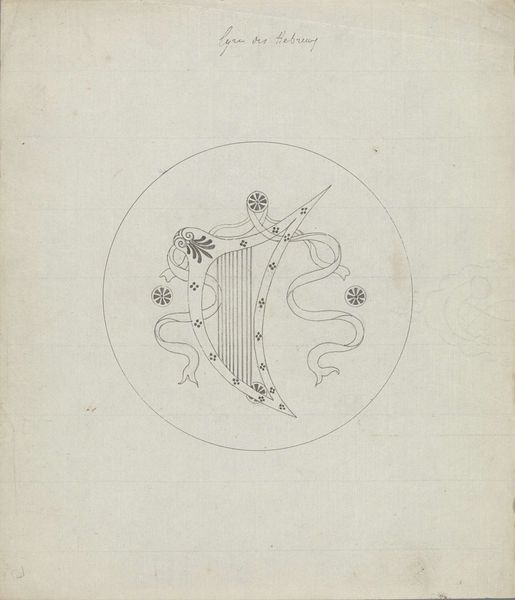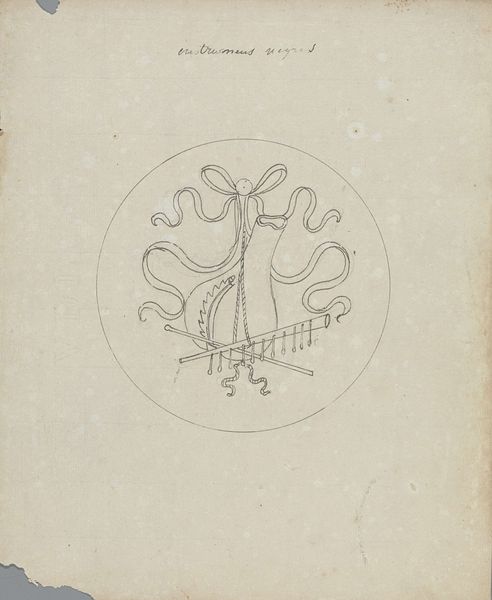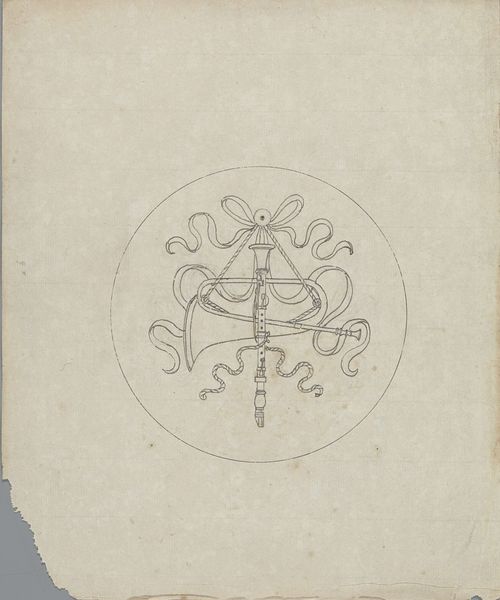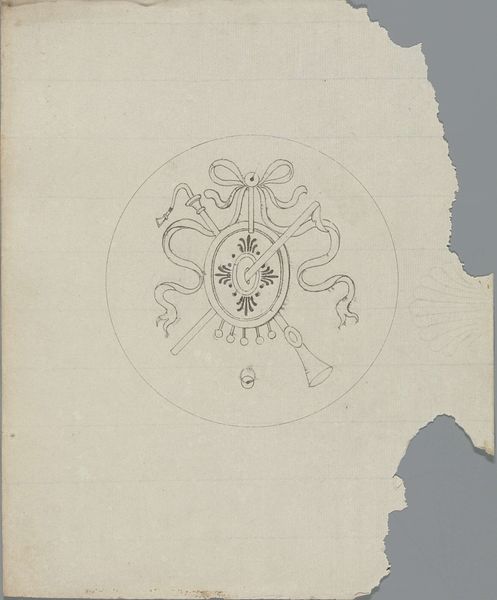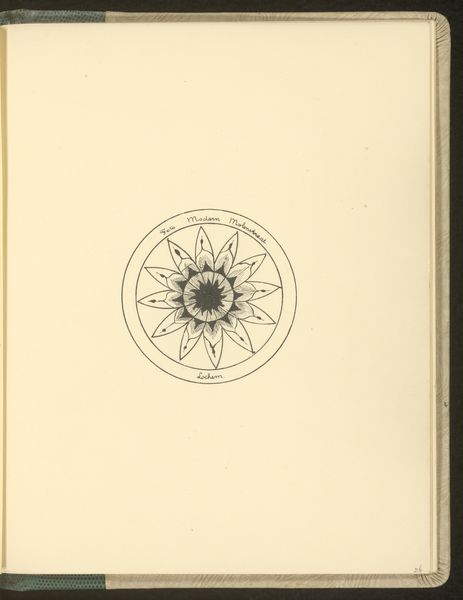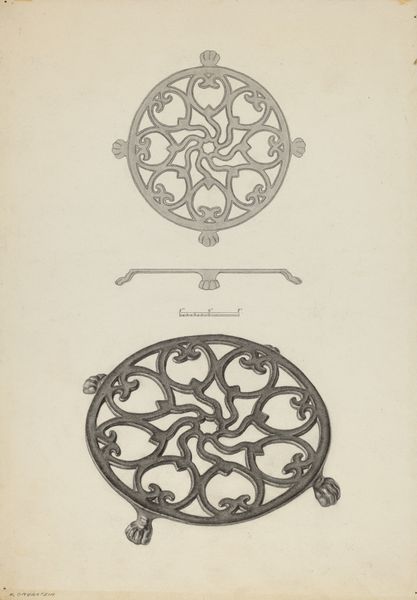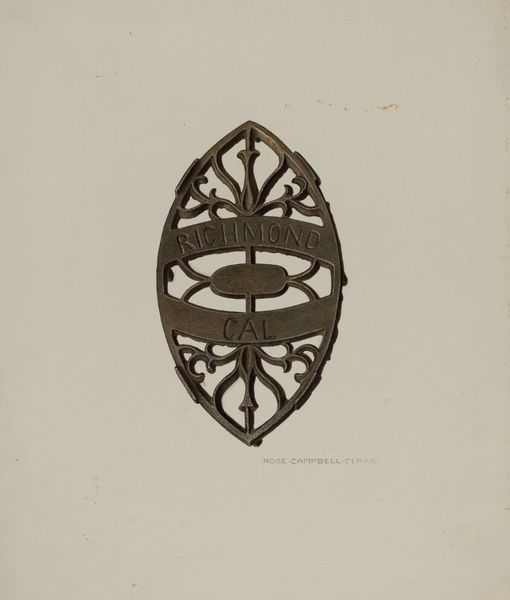
drawing, ornament, paper, ink
#
drawing
#
ornament
#
medieval
#
gothic
#
paper
#
ink
#
geometric
#
line
Copyright: Public Domain
Curator: Here we have an ink drawing on paper entitled “Gothic Ornament” by Karl Ballenberger. It is currently located at the Städel Museum. Editor: My initial reaction is one of precision. The meticulous lines crafting a complex geometric form command attention. I'm curious about the hand behind it, given the exacting detail achieved with what seem to be simple materials. Curator: These ornamental drawings often served practical functions. They acted as templates, informing the construction of cathedrals, the design of stained glass, or even metalwork. Think about the cultural role this design played within the workshop and community. Editor: Absolutely, and when we look at it through the lens of labor, we can think about this individual artist replicating or inventing, but the labor practices inside a workshop—did Karl’s position as draftsman offer particular advantages compared to that of the common worker, the artisan who eventually cut stone? Curator: His design shapes the artisan’s material reality, which speaks to power dynamics in the gothic workshops and society at large. These forms were more than just aesthetic; they were deeply embedded within the religious and political structures of the time. Editor: And thinking about materials, that very act of taking pen to paper, is itself a deeply material one. How would its translation of something from a two-dimensional plan become embedded and fixed within some enormous cathedral, its architecture then becoming an enduring reflection of material resources, and manual human ingenuity? Curator: Precisely! It showcases the medieval aesthetic, of striving for the divine and projecting worldly power all at once, which gothic architecture embodies so completely. We can look into who paid for such ornament. These drawings became the vehicles for ideological dissemination. Editor: Indeed. Looking at it today, I can't help but feel there’s more to it, this delicate yet firm design—it invites us to recognize not just the art, but also labor, value and materials forged through collective ingenuity. Curator: It's interesting how these gothic designs continue to influence architectural and design trends, suggesting a persistent connection to our cultural heritage, constantly renewing old orthodoxies with our present moment.
Comments
No comments
Be the first to comment and join the conversation on the ultimate creative platform.
